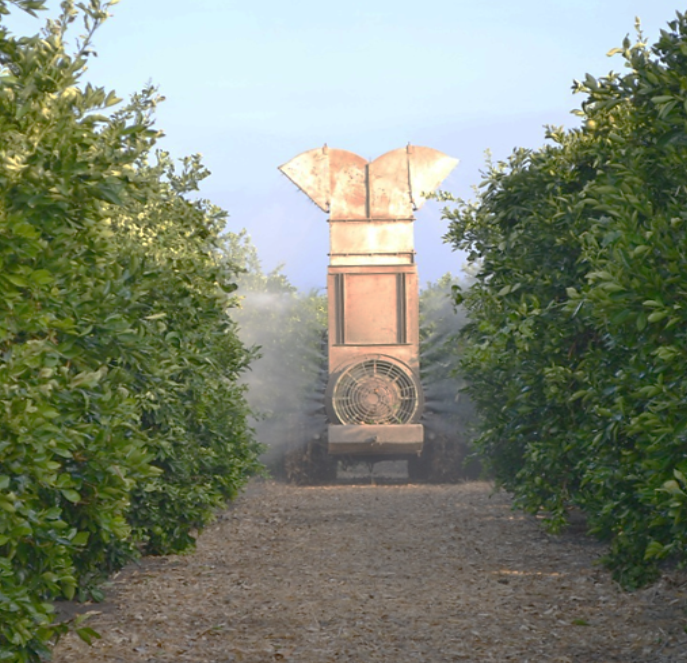Fall Copper Application in California Citrus
October 08, 2019
In California, fall means not only cooler weather, but also the onset of the wet season. With that rain come a lot of production challenges, particularly for citrus growers. Rainfall is the primary driver for spread and development of two critical citrus diseases: Septoria Spot (Septoria citri) and Brown Rot (Phytophthora spp.).
Brown Rot infects primarily mature fruit with initial symptoms appearing as a firm, brownish lesion that may eventually become softer and lead to fruit drop. Brown Rot develops most severely on fruit near the ground. If possible, skirting the tree 24 inches or higher is a good cultural practice that will reduce disease incidence.
Septoria Spot appears initially as small darkened pits in the oil-bearing tissue of the rind. These small pits will eventually expand into large blackish lesions. Fruit with mechanical or frost injuries are particularly susceptible to Septoria.

Due to the quarantine status of Septoria Spot, all Navel and Valencia Oranges shipped to Korea require 1 or 2 preventative fungicide applications. The first application should take place between mid-October and late November, preferably before the first significant rainfall. A combination of copper, zinc, and hydrated lime applied in this window satisfies the Korean Protocol and will provide good protection against both Septoria Spot and Brown Rot.
A good option for the copper fungicide in the fall spray is Nordox 75WG. Not only does Nordox 75WG have the highest analysis of metallic copper of any registered fungicide, but it also is the only cuprous oxide-based formulation. NORDOX 75WG provides good coverage. Optimum is 60-70 droplets/cm2. Millions of particles are deposited.
Cuprous oxide adheres very strongly to the plant making it more resistant to wash-off than other copper sources. Cuprous oxide also takes longer to degrade meaning it is releasing active copper ions for a longer timeframe. These properties make Nordox 75WG a great option to maintain a protective copper barrier on the fruit throughout the fall and winter rains. The minimum labeled rate of 2.5 lb per acre is enough to satisfy the requirements of the Korean Protocol. Higher rates may be desired in high pressure conditions, or later harvesting fields. Additionally Nordox 75WG is OMRI Listed and approved for use in organic orchards.
Nordox 75WG is also approved for skirts sprays and sprays under the tree canopy. This is a good practice to help reduce Brown Rot infection.
For the zinc source in this application, BRANDT Micronized Neutral Zinc is an ideal choice. The high analysis of zinc means the Korean Protocol will be satisfied with an application of only 5 lb per acre. Primarily derived from zinc oxide, BRANDT Micronized Neutral Zinc will resist wash-off and maintain zinc residue on the fruit better than sources exclusively derived from zinc sulfate.
Adding a sticker to the spray tank will make the copper/zinc spray last longer and adhere better. BRANDT Organics SKH Sticker is a good option that has been used in the citrus market for many years with a long history of safe, effective use. A rate of 1-2 lb per 100 gallons of spray solution is recommended for fungicide applications.
For more information on these diseases, visit the citrus page of the University of California Statewide IPM Program website: http://ipm.ucanr.edu/PMG/selectnewpest.citrus.html
